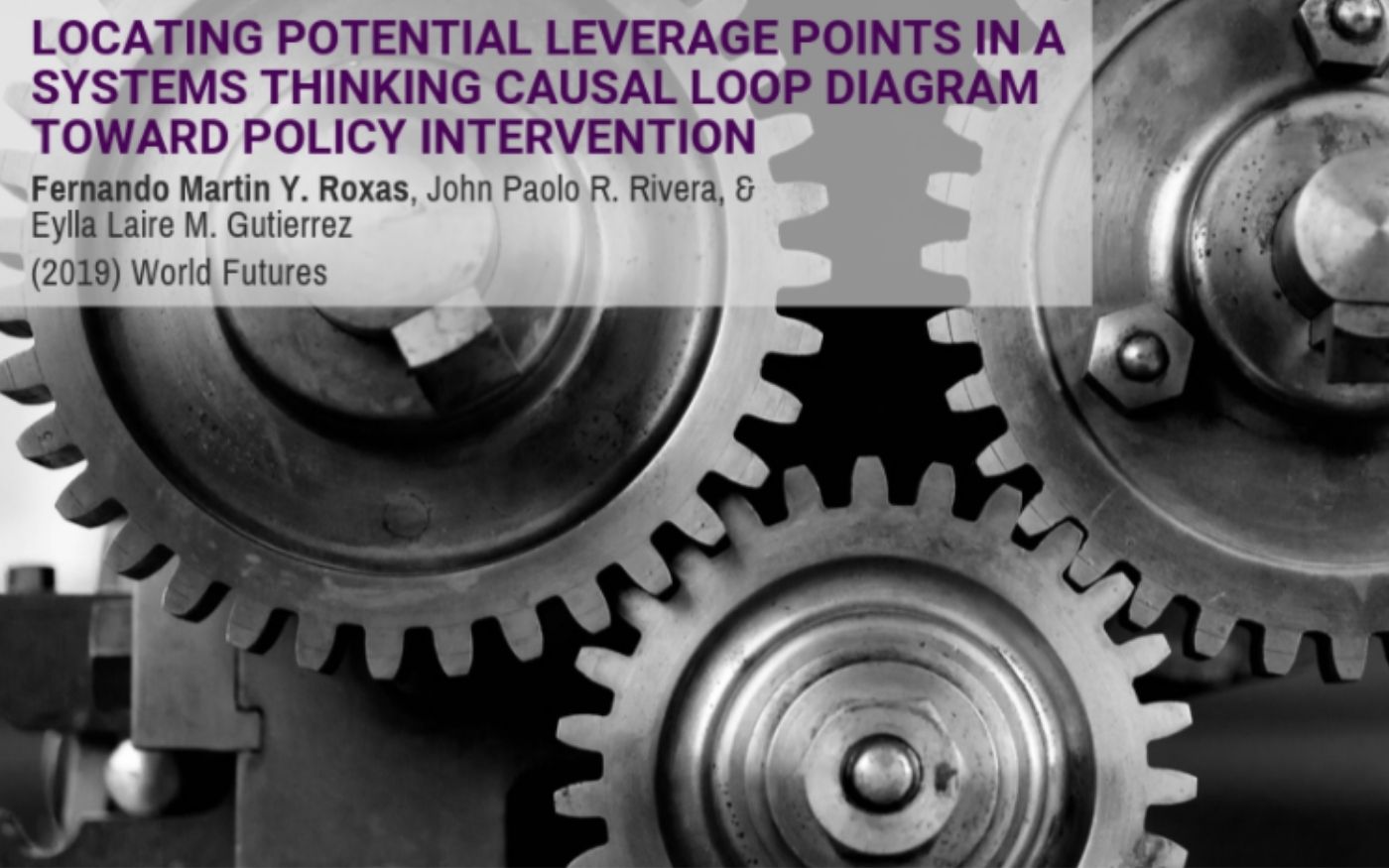Research by: Fernando Martin Y. Roxas, John Paolo R. Rivera, & Eylla Laire M. Gutierrez
Executive Summary
Accelerating changes in technology, population, and economic activity is transforming the society we live in. Such challenged our institutions, practices, and beliefs. According to Sterman (2000), these changes we experience are either intended or unintended consequences of humanity itself. Subsequently, the problems we are facing have evolved to become volatile, uncertain, complex, and ambiguous (VUCA) (Bennett & Lemoine, 2014). Oftentimes, addressing VUCA problems through well-intended efforts results in policy resistance (i.e., policies are not effective due to the unforeseen reactions of those affected). According to Sterman (2000), “many times, our best efforts to solve a problem actually make it worse” (p. 3).
Hence, to be able to formulate policies that takes into account the unforeseen reactions and unintended consequences, Adams (1918) believed that in understanding the radical changes in society, a new social mind is required. That is, he called for the movement towards new ways of thinking and acting. Thus, we appeal to Systems Thinking (ST).
As defined by Senge (1990), ST is “a discipline for seeing wholes. It is a framework for seeing interrelationships rather than things, for seeing patterns of change rather than static snapshots” (p. 68). It is the capacity to view the world as a complex system, in which everything is linked to everything else (Sterman, 2000).
A critical element of systems thinking is the practice of integrating multiple perspectives and synthesizing them into a causal loop diagram (CLD) that anticipates the various ways in which a system might react to policy changes. Hence, this study formalizes the procedure for identifying potential leverage points in a CLD. These are a system where interventions can be best introduced because it is a common cause to multiple effects, it is able to influence many other variables, and it is a root cause. Effectively identifying potential leverage points enables policymakers to apply systems thinking tools to devise strategies that are capable of addressing VUCA problems.
To cite this article: Roxas, F. M. Y., Rivera, J. P. R., & Gutierrez, E. L. M. (2019). Locating potential leverage points in a systems thinking causal loop diagram toward policy intervention. World Futures, 75(8), 609-631. https://doi.org/10.1080/02604027.2019.1654784.
To access this article: https://doi.org/10.1080/02604027.2019.1654784
About the Journal
World Futures journal welcomes critiques of limiting assumptions, as well as the development of new perspectives, on human nature, consciousness, society, and the nature of the universe. The journal is focused on the exploration, articulation, and application of human potentialities, and the implications for building a sustainable and humanistic future. It accepts articles, research notes and book reviews and invites essays relevant to its aim in all fields of interest from the sciences to the humanities.
SJR: 14





